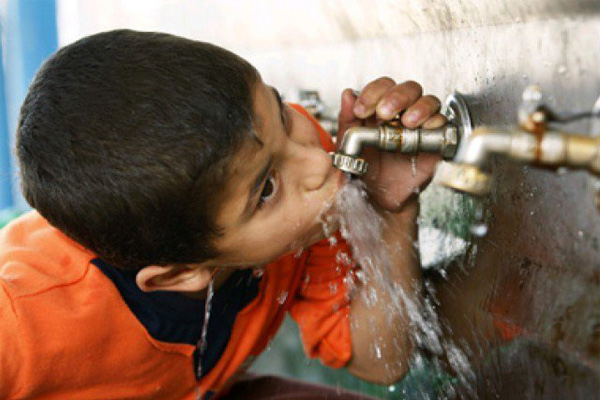Water is an important part of the human body, and human health is closely related to the quality of drinking water. Drinking good quality and safe water is beneficial to promoting human health, while poor drinking water will harm human health.
"Drinking water safety" has become the focus of attention of the whole society, especially in large populated cities.
At the end of 2014, the news that antibiotics were detected in tap water in Nanjing caused widespread concern. Nanjing Water Affairs Group responded urgently, saying that "the water supply quality fully meets the 106 indicators of the national drinking water quality standard (note: the 106 indicators do not include monitoring indicators for antibiotics)." The response of the "national standard does not check antibiotics" also triggered public opinion. Uproar. Water quality testing, what should be checked?
Water quality monitoring is the process of monitoring and measuring the types of pollutants in the water body, the concentrations of various pollutants, and their changing trends, and evaluating the state of water quality. The monitoring scope is very wide, including unpolluted and polluted natural water (river, river, lake, sea and groundwater) and various industrial drainage. The main monitoring items can be divided into two categories: one is a comprehensive indicator that reflects the water quality status, such as temperature, color, turbidity, pH, conductivity, suspended solids, dissolved oxygen, chemical oxygen demand, and biochemical oxygen demand Etc .; the other is some toxic substances, such as phenol, cyanide, arsenic, lead, chromium, cadmium, mercury and organic pesticides. In order to objectively evaluate the status of river and ocean water quality, in addition to the above monitoring items, sometimes measurement of flow velocity and discharge is required.
China's total water resources is 2.8 trillion cubic meters. Among them, the surface water is 2.7 trillion cubic meters, and the groundwater is 0.83 trillion cubic meters. The total amount of water resources ranks sixth in the world, and the per capita share is 2240 cubic meters. It ranks 88th among the 153 countries continuously counted by the World Bank. China's current water resources have problems such as total shortage, low per capita occupation, uneven regional distribution, mismatched water and land resources, increasing water pollution, and prominent urban water shortages. The acceleration of urbanization and the development of regional economy have increased the load of local water resources and exacerbated the pollution of urban groundwater. Many cities have encountered problems such as eutrophication of water quality and excessive iron and manganese standards. The problem of water pollution has become one of the most important constraints on China's economic and social development, and it has attracted great attention from national and local governments.

Judging from the reports of various types of water quality surveys or monitoring standards abroad, due to the different national conditions, their emphasis is different. In addition, the selection and determination of survey or monitoring indicators also has a gradual and deep development process, such as the increase in the number of new chemical substances, the development of analytical techniques, and the use of In-depth research on the physiological and biochemical processes of carcinogenesis, teratogenesis and mutagenesis, monitoring or investigation projects will be continuously changed, and methods will be gradually developed and improved. For more information, please refer to the analysis report of the drinking water industry market released by China Report Hall.
In fact, in the past 2014, there were too many incidents of tap water security nationwide. According to incomplete statistics, only in January-April 2014, there were more than a dozen incidents of water problems exposed nationwide. Especially after tap water pollution in Lanzhou, drinking water quality safety has become the focus of public attention just like the haze days. In recent years, there have been many incidents of urban water pollution in the country, and the "water quality crisis" is no longer alarmist. At the end of last year, the central media disclosed that antibiotics were detected in some major rivers in the country, such as the Haihe River, the Yangtze River estuary, Huangpu River, and the Pearl River, and even antibiotics were detected in Nanjing's tap water. This has caused concern about drinking water safety.
The "Food Safety Law" stipulates that "drinking water shall comply with national sanitary standards for drinking water." A basic common sense is: unqualified goods cannot be sold on the market, and unqualified tap water should not be an exception; there is another basic common sense: tap water is to be drunk by people, and unqualified tap water phase A food safety incident with a wider scope than a substandard food.
The drinking water sanitation standard is based on protecting the health of the population and ensuring the quality of human life. It regulates the various factors (physical, chemical, and biological) in drinking water and the health of the population in legal forms, and in order to achieve the amount The provisions of the relevant codes of conduct made by the relevant state departments have been issued in a certain form of legal health standards. At the end of 2006, the Ministry of Health together with relevant departments completed the revision of the 1985 edition of the "Sanitary Standards for Drinking Water" and formally promulgated a new edition of the "Sanitary Standards for Drinking Water" (GB5749-2006), which has been stipulated since July 2007. Full implementation from today.
Although the country has implemented the new water quality standard (GB5749-2006) on July 1, 2007, the standard has been increased from the original 30 indicators to 106 indicators, which is in line with international water quality standards. However, at present, more than 90% of China's urban waters are polluted to varying degrees. The qualified rate of source water for tap water in large and medium cities is only about 70%, and the qualified rate of source water in small and medium cities is even lower.
In response to the increasing concern of the society over drinking water safety, the government must establish a water pollution treatment and evaluation mechanism that is guided by laws, standards and policies and is in line with international standards as soon as possible to further improve drinking water safety and water environment monitoring and analysis capabilities and risks. Monitoring and early warning capabilities. In particular, it is necessary to adapt to the evolution of water pollution in time to modify and improve water quality monitoring indicators, such as supplementing the lack of antibiotic monitoring, to form a rigorous and high-standard detection system, leaving no loopholes in the potential danger of water quality.
In the “Twelfth Five-Year Plan”, the Ministry of Environmental Protection has explicitly added the binding monitoring indicators of ammonia nitrogen and nitrogen oxides to the existing monitoring indicators, so the water quality monitoring industry will definitely add equipment for these two aspects on the existing basis. Investment, the water quality monitoring industry will continue to develop steadily and continuously in the future; in the operating market, with the strengthening of supervision by relevant departments, the number of operating companies will gradually shrink, and a few large-scale and strong operating companies will gradually become operating markets Main force. With the country's increasing emphasis on environmental protection, competition in the water quality monitoring industry will continue to intensify, and excellent domestic water quality monitoring companies will rise rapidly and gradually become the leader in the water quality monitoring industry!


 Your location:
Your location:

